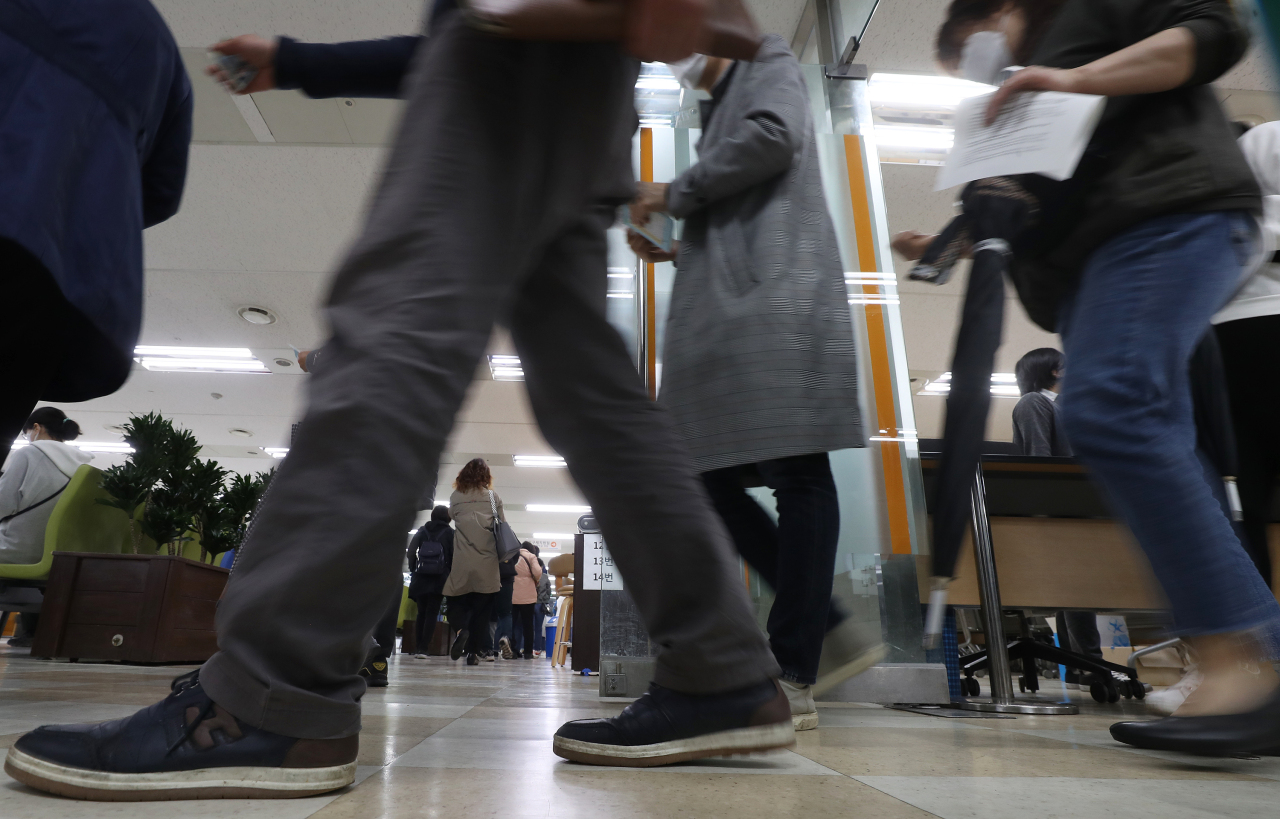Job market dropouts surge amid COVID-19 slump
Rising number of young adults ‘not intending to seek jobs at all’
By Bae HyunjungPublished : April 19, 2020 - 17:32

Amid the prolonged economic fallout of the COVID-19 pandemic, South Korea has seen a surge in its number of those dropping out of the job market altogether, government data showed Sunday.
As these people are not subject to the government’s unemployment allowances and other benefits, there have been growing calls that the current job indexes and related subsidy system should be revised in light of the market reality.
According to data from Statistics Korea, the number of those not intending to seek jobs stood at 2.37 million in March, up 18.3 percent from a year earlier. Both the monthly figure and the on-year rise marked the highest level since the office started to compile such data in 2003.
Those who choose “not intending to seek for a job” as their employment status are classified as economically inactive and are not included in the nation’s official jobless index.
Calls are escalating, however, that such people should also be included in the count, as their renunciation was not a voluntary decision but rather an inevitable consequence of the virus-hit job market stagnation.
The population of those not looking for jobs at all saw the steepest rise among young adults -- 412,000 as of end-March and up 35.8 percent from a year earlier.
Also, the 20s age group accounted for 17.4 percent of the nation’s total, an unusual figure for an index mostly consisting of imminent retirees.
The number of discouraged job seekers -- those who have attempted job seeking during the past year but have given up -- also hit the highest level in more than a year. The corresponding figure came to 582,000 as of end-March, up 44,000 from a year earlier, turning into an uptrend after six consecutive months of decline, data showed.
Market observers are raising concerns that these economically inactive people may be forced to stay out of the job market for a while, given the general market slump here and across the world.
According to the statistics office’s data, there have been 28 times in total since June 1999 that the number of those temporarily off work rose by 300,000 or more from the previous month. In most cases -- except March this year -- the figure recovered to the conventional level, indicating the resilience of the job market.
“The number of those taking leave from work tends to increase in January or August, during the children’s school holiday season,” said an official.
But when the increase in the number of those on leave is accompanied by a decrease in the employed population, it may lead to a plausible “employment cliff,” as had occurred during the global financial crisis in 2009.
The number of employed people here totaled 26.7 million in March, down 195,000 from a year earlier and turning into a decline for the first time in more than 10 years.
“The unemployment allowance is insufficient to respond to the soaring volume of job losses as many of them take place outside the employment insurance system frame,” Kim Yong-beom, first minister of the economy and finance, wrote on Facebook.
The unprecedented epidemic situation has revealed the vulnerability of Korea’s job market, the senior fiscal policymaker pointed out, calling for additional relief measures.
“The increased number of those on temporary leave partly shows that (the government’s) safety measures such as the employment maintenance subsidy is taking the intended effect, but also indicates a gloomy future of our job market as many of them had to leave work involuntarily,” he added.
By Bae Hyun-jung (tellme@heraldcorp.com)










![[Hello India] Hyundai Motor vows to boost 'clean mobility' in India](http://res.heraldm.com/phpwas/restmb_idxmake.php?idx=644&simg=/content/image/2024/04/25/20240425050672_0.jpg&u=)








